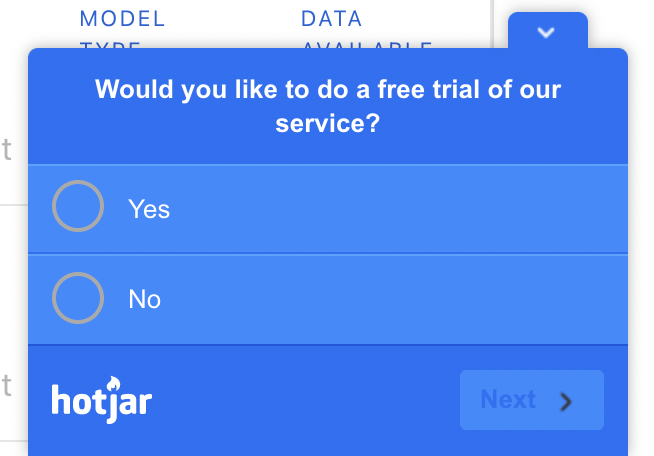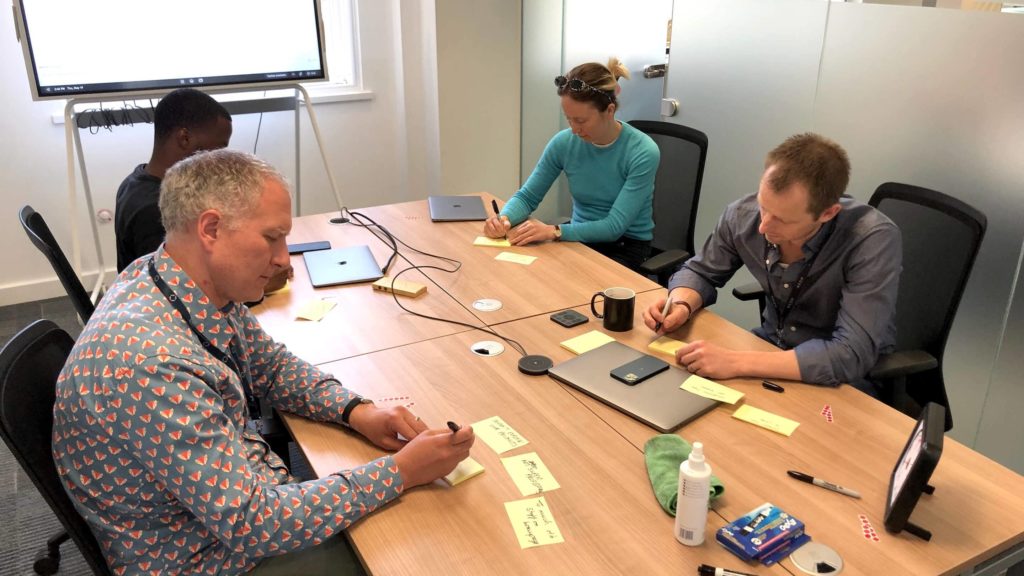How to use A/B testing to improve a low traffic website
High-traffic websites run A/B tests and decide on a variant that works better. In the case of a low traffic website, this isn’t possible. You would either have to wait forever for the arrival of any meaningful data, or invest a lot of money from the get-go. We assume none of these options is viable, otherwise you wouldn’t be here. Written by Tomasz LisieckiAn A/B test requires significant input to reach trustworthy results. It is a luxury that start-ups and small companies are not entitled to.
If your website has a low volume of traffic, you are in a chicken-and-egg situation.
- To afford visitors, you need conversions.
- If you want conversions, you need traffic.
Websites that get little-to-zero visits have other problems, too:
- They can’t understand why people are not converting.
- They can’t measure what works and what does not.
However, hope is not lost. There are ways to learn why people are not converting and to gain traction.
How to find out why people are not converting
User testing your website
It’s the easiest and the most accessible method. Ask someone to use your website while you observe and take notes.
You need to decide what it is that you are testing first.
Do you want them to spend a moment on your website and then tell you what they think your company does?
Do you want them to try to find certain information without your help?
Do you want them to buy a product?
Deciding on the purpose of a test makes the exercise more fruitful.
When you feel confident about your website, hire user testers that resemble your target audience for more customer-centric results.
NerdCow offers user testing and that was the deciding factor. User feedback was an invaluable selling point.Justyna, Chief of Staff at a Biomedical Research Company
Watch session recordings from tools like Hotjar or CrazyEgg
Watching sessions gives you an insight into how your visitors use your website. You can track their cursor movement, scrolling patterns and at what point they have exited the website. Plus, you will see your designs through a fresh pair of eyes.
On top of that, it’s anonymous and secure, as the cursor movement and interactions are recreated rather than truly “recorded”, and you can’t see any sensitive information the recorded user entered during their visit.
Ask visitors for their opinion in surveys
Many businesses don’t realise the potential of asking their website users about their experience. It’s a great opportunity to hear about struggles as they happen. Additionally, they are a great way to enhance your website copy and expand the range of products or services.
It’s our human nature that we’re much more likely to point out negatives rather than positives. It’s often visible in ratings for fairly “feedback-neutral” places, like airports or post offices. They rarely ever get good feedback from the majority of people that had a pleasant experience. However, the moment someone encounters an issue, they are eager to leave a bad review.
For website testing, this actually works in your favour. You want people to point out the negatives. Sure, some will be very nitpicky, but it’s unlikely a disappointed visitor won’t leave feedback.

Analyse your competitors’ websites
It is better to learn from someone’s mistakes. Additionally, they might have done something you haven’t thought of yet. If you don’t have any direct competitors, search for other businesses which target similar audiences. In that case, business websites in similarly sized niches are often a great source of inspiration.
Be careful of falling into the trap of replicating design or feature choices based on your intuition, though. Your business is unique and what works for others, even if they’re direct competitors, might not work for you. Note it down and carefully analyse why it’s there – or use it as an example when requesting website optimisation from a web agency.
The entire reason for conversion rate optimisation is to ensure your business website is a perfect match for your customers. You don’t want your website to become a blend of solutions that work for your competitors.
Talk to people within your industry
Find people who sold similar types of products or services. If they are willing to share, you will gain access to valuable knowledge and possibly learn about common concerns and objections that your customers might have before purchasing from you.
Add a phone number
Adding an incentive to get in touch might help. Even if you are not big on talking on the phone, it presents a chance to listen to what prospects have to say and the questions they ask.
Many business websites feel like they’re hiding the phone number on purpose. Some explain that’s because they’re looking to increase the conversions on the site – but sending a contact form or purchasing directly from the site aren’t the only types of conversions, especially for local customers.
Adding a prominent phone number into the mix can bring you a whole lot of customers who wouldn’t buy from you before. Even if they don’t call you, the phone number can serve as a trust-building factor.
How to measure what is working
Just because your website doesn’t get much traffic, it doesn’t mean you can’t A/B test. Many people hold the opinion that there is no reason to run any experiments on a website with low traffic.
We disagree.
When done correctly, there is no reason to not test your website in search of a better conversion rate.
Someone asked us on LinkedIn, “How much traffic is enough to get CRO right?”. The answer is lawyer-ish: it depends.
- Your current conversion rate. The lower the conversion rate, the longer it takes to detect an improvement.
- Increase in conversion rate that you are trying to detect. A bigger bump doesn’t mean you need to wait longer.
- How confident do you want to be with the results? Sometimes settling for less confidence brings more value.
The short answer is that it can be calculated. We’re using a simplified probability model where we can roughly estimate how confident we are in the result. Let’s take the following example:
- 500 visitors a week
- 1% conversion rate (which is generally on the low end)
- a goal of doubling the conversion rate
Knowing this, we can calculate that the test would have to last about 4 weeks to give significant results with at least 95% of confidence. This means that the long-term results will land very close to a 2% conversion rate – they can be slightly worse, but also better.
At least one of these assumptions won’t generally apply to small businesses and startups:
- you might struggle to get 500 visitors to the tested page (not to the website)
- doubling the conversion rate might not be realistic
Unfortunately, both mean you’ll need an unreasonable amount of time for A/B tests to work. If you aim for a 50% conversion increase instead of 100%, you’re looking at 12 weeks of experiments, so triple the time. Cutting the traffic in half on top of that brings us to a whopping 24 weeks – half a year of testing. Although possible, it significantly devalues the process.
So how do you approach testing on a small website?
Here are several effective tactics that you can use instead.
Always do big changes
Test big and bold ideas. When your website doesn’t get much traffic, it is important to make significant changes to the website and understand what works. See if the changes tackle your users’ objections. Play around with your offer. Focus on bits which are likely to get attention.
When your website doesn’t get much traffic, it is important to make significant changes to the website and understand what works.
Bigger changes usually cause a stronger reaction and these experiments thrive on that. You might even find out that a goal of doubling sales isn’t unrealistic – which might open up the opportunity to thoroughly A/B test your site.
Measure micro conversions
It’s difficult to measure the ultimate conversion goal. Instead, focus on those small conversions that happen throughout the user journey. The less traffic your website gets, the more you need to optimise for micro conversions.
What are the baby steps that a user needs to take before counting as a conversion?
If you consider ecommerce, the ultimate goal is selling. But if your traffic is low, the sample of converters might not be enough to justify testing. Instead, you can focus on the click-through rate of your search engine.
Are the visitors even visiting the product page?
Or perhaps they’re struggling at an earlier stage because of a bad search engine?
These steps of the user journey will generally have lots of page views, meaning you can test them before you’re able to test the entire funnel. And what’s best, this is not a half measure by any means. A full-blown A/B test on a popular website should target micro conversions as well. Testing them isn’t a “hack” or a workaround – it’s a legitimate way to improve your conversions.
Test major pages
Following up on the previous example, look for your top landing pages and optimise the heck out of them. Since they get the most portion of your traffic, they will provide you with meaningful results sooner.
It’s okay if they don’t convert at all. You won’t be able to perform a full A/B test – but if you can drive a couple of conversions, this will be a sign you’re going in the right direction and long-term, it will build the foundations for a proper A/B test.
Combine pages into one test
If a few landing pages share the same element that needs testing, apply the change to all of them. Then, include them in the same test.
Decide when you declare a winner
The standard threshold for a winning variation in an experiment is 95%. However, you can use a different figure. It depends on your risk tolerance.
If your traffic is low, you’ll have to settle for less confidence. Don’t put on your perfectionist mask because it will get you nowhere. These days most marketing decisions are still based on intuition, so ending a test at 90% or 85% confidence works too. It’s still better than the traditional guesswork.
Temporarily increase the volume of traffic
If you are fine with spending a bit of profit on a paid campaign, use them to drive traffic to the tested pages. The spike in traffic might just give you what you need.
Conclusion
While it may seem to you that you are at a disadvantage, there are several methods that can work. Testing is a great way way to grow start-ups and small companies.
Now that you have a good overview and understanding, go ahead and play with them. Apply a mixture of tools and see what works for your website.
Good luck in increasing conversions. And if you need some guidance, let me know.
Originally published Feb 05, 2020 3:28:07 PM, updated May 6 2025.



